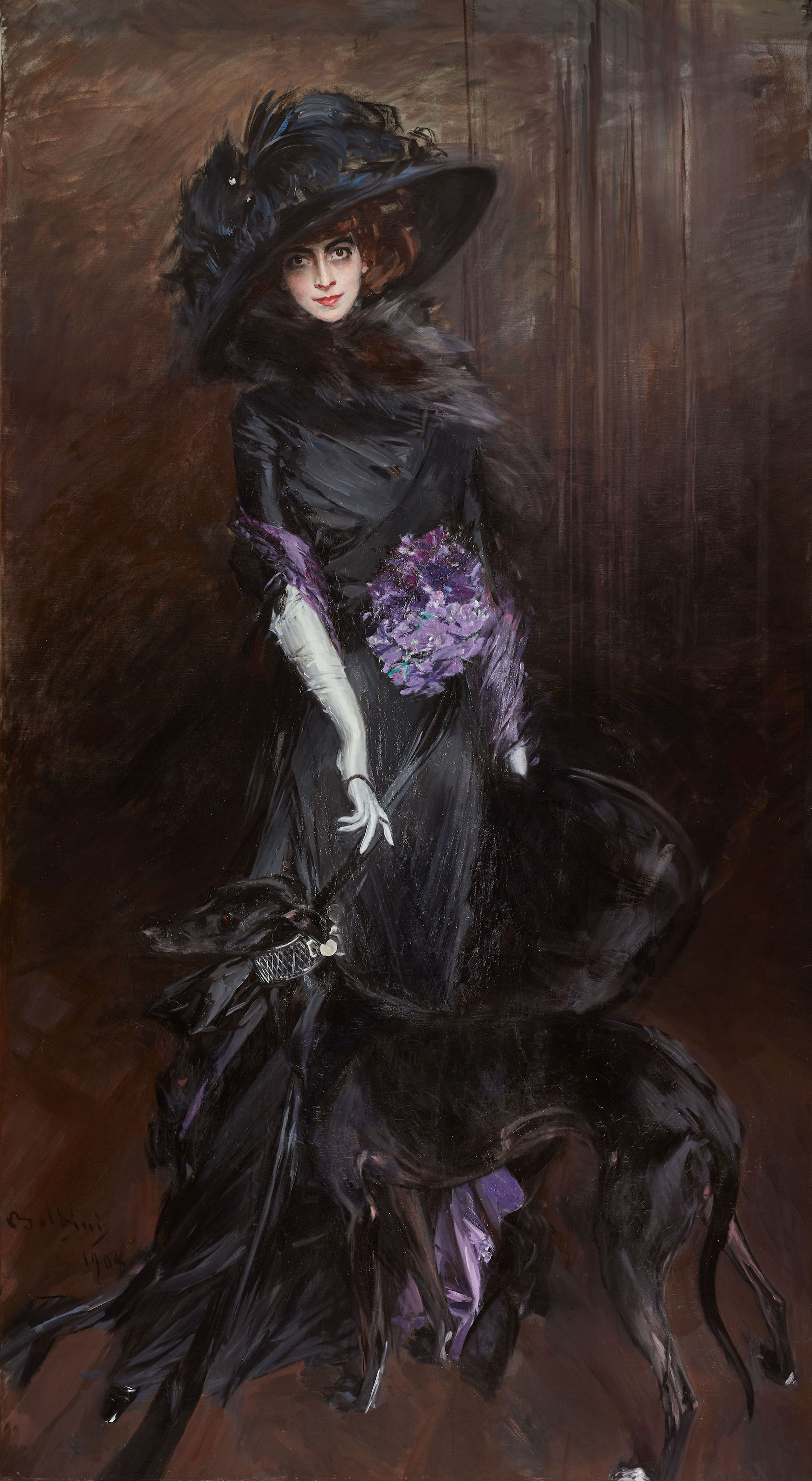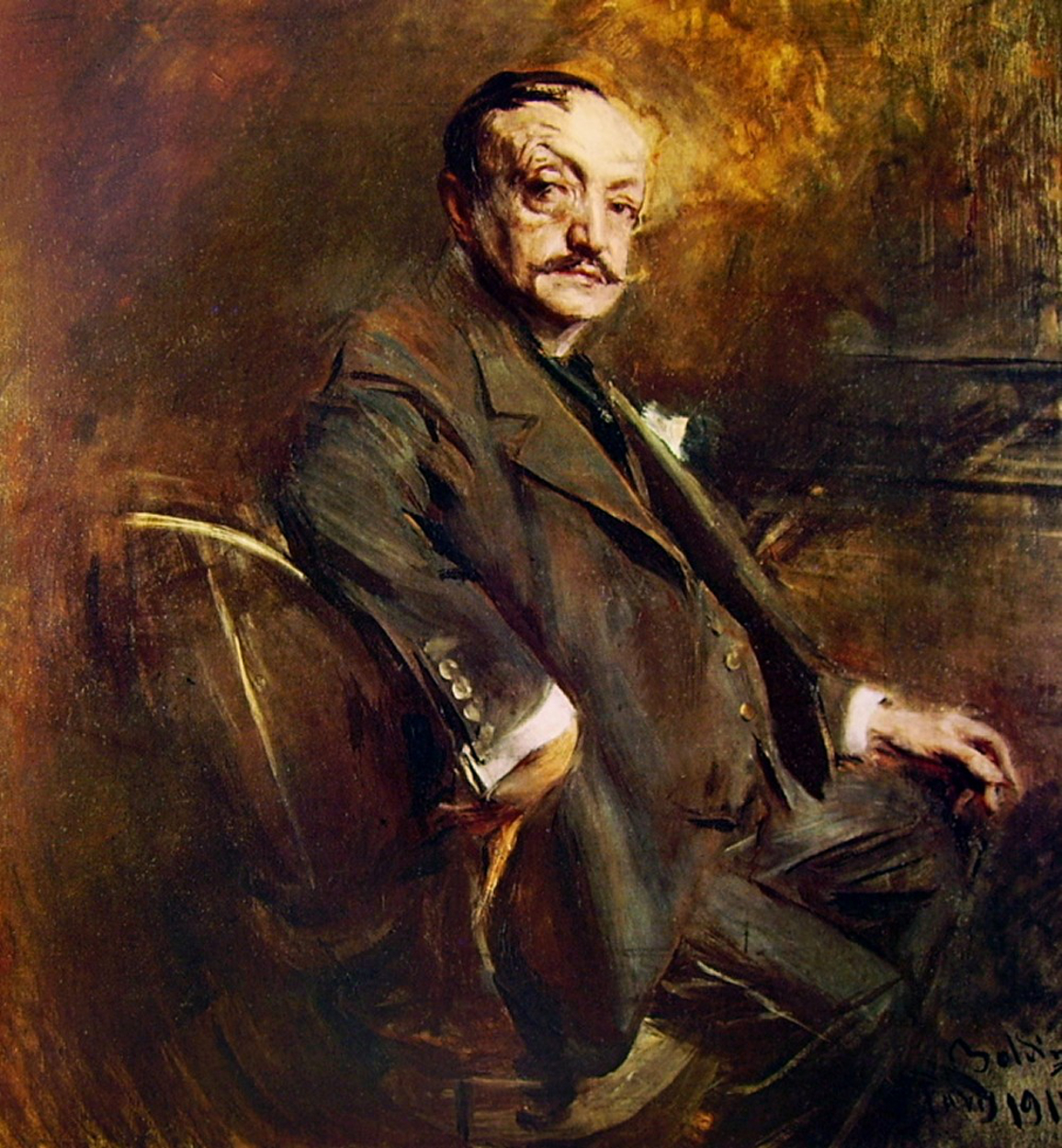From March 8 to June 3, 2018, The Rijksmuseum presents a magnificent exhibition, High Society, covering four centuries of glamour in portrait art by the great masters of the history of art, including Cranach, Veronese, Velázquez, Reynolds, Gainsborough, Sargent, Munch, and Manet. You can read more about this great show here. If you can't visit Amsterdam, however, we have something special for you—we will feature a couple of great portraits from the exhibition in DailyArt. You can see our other features from High Society in our archive:)
No other personality epitomizes the scandalous extravagances and eccentric high jinks of the Belle Epoque as well as the flamboyant Marchesa Luisa Casati. Six feet tall and thin as a rake, and with bleached skin, heavily made-up eyes and hair dyed either a fiery red or emerald green, her appearance was unforgettable. She patronized fashion designers such as Mariano Fortuny (1871–1949) and Paul Poiret (1879–1944), and wore the most outlandish concoctions – a dress made of light bulbs with a generator attached, or one made of white peacock feathers plucked from the birds in her private menagerie. She wore live snakes as jewellery and paraded around Venice, where she lived in the Palazzo Venier dei Leoni (now home to the Peggy Guggenheim Collection), with a pair of leashed cheetahs. At the many legendary parties she threw in Venice and later on the island of Capri and at her Palais du Rêve just outside Paris (Robert de Montesquiou- Fezensac’s former residence), the champagne flowed freely and there was no shortage of cocaine and opium. The guests were a veritable who’s who of high society and the avant-garde, ranging from Kaiser Wilhelm II (1859–1941) to the founder of the Ballets Russes, Sergei Pavlovich Diaghilev (1872–1929), and from the Futurist painter Alberto Martini (1876–1954) to the novelist Michel Georges-Michel (1883–1985), who based some of his characters on her. Not surprisingly, considering her ambition in life to become ‘a living work of art’, she sat for around two hundred portraits, including a bronze bust by Jacob Epstein (1880–1959) and photographs by Man Ray (1890–1976). In 1932, Casati had exhausted her family’s fortune and accumulated a debt that ran into the tens of millions. Her possessions were auctioned off and she spent the rest of her life drinking gin and holding sances in a one-bedroomflat near Harrods in London.
She would rummage bins for scraps of fabric to use as fashion accessories and applied black shoe polish around her eyes instead of kohl. Her life was the subject of a 1965 play, La Contessa , starring Vivien Leigh and a 1976 film, A Matter of Time, starring Ingrid Bergman. In the past couple of decades, the fashion designers John Galliano, Alexander McQueen and Karl Lagerfeld, among others, have based collections on her look.
See you tomorrow:)


 Giovanni Boldini
Giovanni Boldini